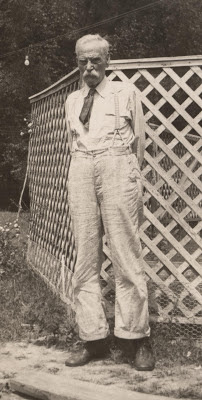 |
| Almyra Brooks |
Okay, it was a bad pun. But when you have a surname like Brooks in your family you have to have a little fun with it.
I have been doing a lot of research on Almyra Brooks' family. Why? Because she is one of those women's lines that has been pushed to the side in other people's research because it required a little too much effort to figure them out.
But not me. I am very persistent and tenacious when it comes to these kinds of puzzles, and I love a good challenge.
When I started this research all I knew about Almyra's parents was mostly just their names and a few other details. So what have I been able to find out so far? Almyra's father John, jr. was born in Albany, Albany County, New York a week after his father John, sr. died of illness in the Buffalo area of the state (after having joined the Army to fight in the 'War of 1812'). John, jr.'s mother, Diana Smith Brooks (who was born in England), was left with five children to raise on her own. The eldest of those children was Peter, and he was not even her own. Peter was born during what I am quite sure was John's first marriage. What's that you say, John Brooks, sr. had a previous marriage? Oh yeah. And I am the one who figured it out.
The guardianship file for John Brooks, sr. indicates all the children along with their ages. Using a wonderful device called a calculator, I was able to figure out that Peter was born before Diana and John were married, a good indication that John was married previously to Diana. The guardianship case also named a Peter Brooks, Diana's brother-in-law, as guardian. So not only do I now have the names of all the children of John, sr., I have a brother for him too.
While in Salt Lake City, I looked at a film of burial records of the Dutch Reformed Church in Albany on the off chance it might have something of interest for me. I found two intriguing records. One was 'John Brooks' child' burial costs and the date of August 1802, the other one was an entry for 'John Brooks' wife', burial costs and a date of October 1805. These entries were intriguing because of the dates, both of which were before John married Diana in 1807 which strongly suggested a connection. So I made note of the entries.
When I came home and started going through my research data, I looked over the above records and decided to check other online databases of the Reformed Dutch Church records. I found three very interesting entries in the marriage and baptismal records. The first was a marriage for a John Broocks to a Hannah Groesbeck in 1801. The second was the baptism of a daughter Elizabeth in 1802. The last and in my mind most convincing evidence that this marriage was my John, sr.'s first one, was a baptism for a Peter in 1804, the same year that the eldest son Peter was born.
Put together with what I already know, I am convinced that John's first wife was Hannah, they had a daughter Elizabeth who died at a few months of age, and then had a son Peter. Hannah died about 10 months after Peter's birth. John then married Diana. They named their first born Elizabeth after John's first daughter.
So my next question is, who are the parents of John, sr. and Peter Brooks?
The best source would be the same Dutch Church records I looked at previously online. These records along with a website dedicated to the history of Albany have given me information that makes me lean towards the theory that John Brooks b1783-d1815, brother to Peter Brooks b1780-d1825 are both the sons of Peter Brooks and Frances Wendell. I know Peter and Frances had a child named Peter, as I found a baptismal record for one in 1780. John Brooks named his eldest Peter. John had a brother named Peter. (There are not a bountiful amount of Peter Brooks in the directories or census records.)
If indeed this connection is true, it has been indicated that Peter Brooks who married Francis Wendell in 1772, was the son of Jonathan Brooks and possibly Rebecca Tatten, (Jonathan's will names his wife Elizabeth, so I am unclear about this information). Jonathan is considered the patriarch of the Brooks of early Albany.
There is still research to do on this line, but it is starting to look up. It is still unclear if the Brooks are of Dutch or English descent. But I am looking forward to finding out.





























